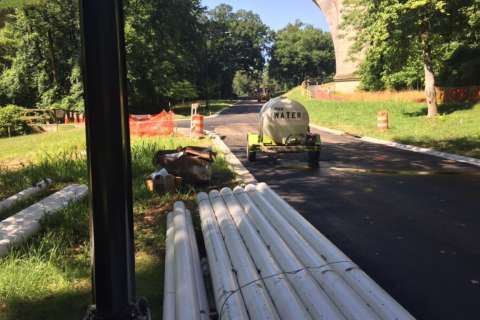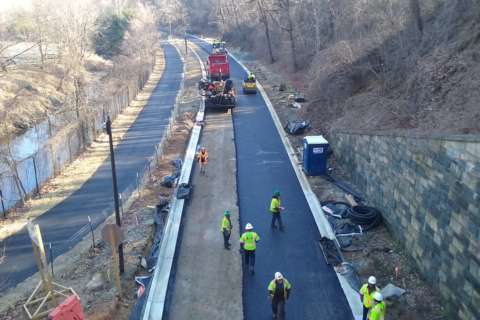WASHINGTON — When the newly rebuilt section of Beach Drive between Tilden Street and Rock Creek Parkway opens up, you’ll see more than just a new trail along the side of the road. Along certain spots on the road, construction crews have built what are called bio-retention cells, tasked with keeping pollutants coming off cars and the road from making it into Rock Creek.
There are four of those cells on the first newly rebuilt stretch of Beach Drive.
“It’s basically an engineered mechanism to retain stormwater before it runs off into Rock Creek,” says Danny Schaible, a project specialist with the National Park Service.
These cells only look like a big pile of rocks sitting in a ditch.
“The oil, the pollutants, the sediment, all the things that would affect water quality are trapped and retained in here,” says Schaible. Then it “gets filtered through a quick draining medium and recharges the groundwater.”
The cells will also come in handy whenever a big rainstorm, like the one the D.C. area just experienced, blows through.
“It minimizes potential floods,” says Schaible. “It minimizes erosion impacts from really fast-moving stormwater, and it filters out all those undesirable pollutants from the stormwater.”
More of these cells are slated to be built along Beach Drive as the construction project moves north past Tilden and toward Military Avenue and eventually the Maryland state line.








